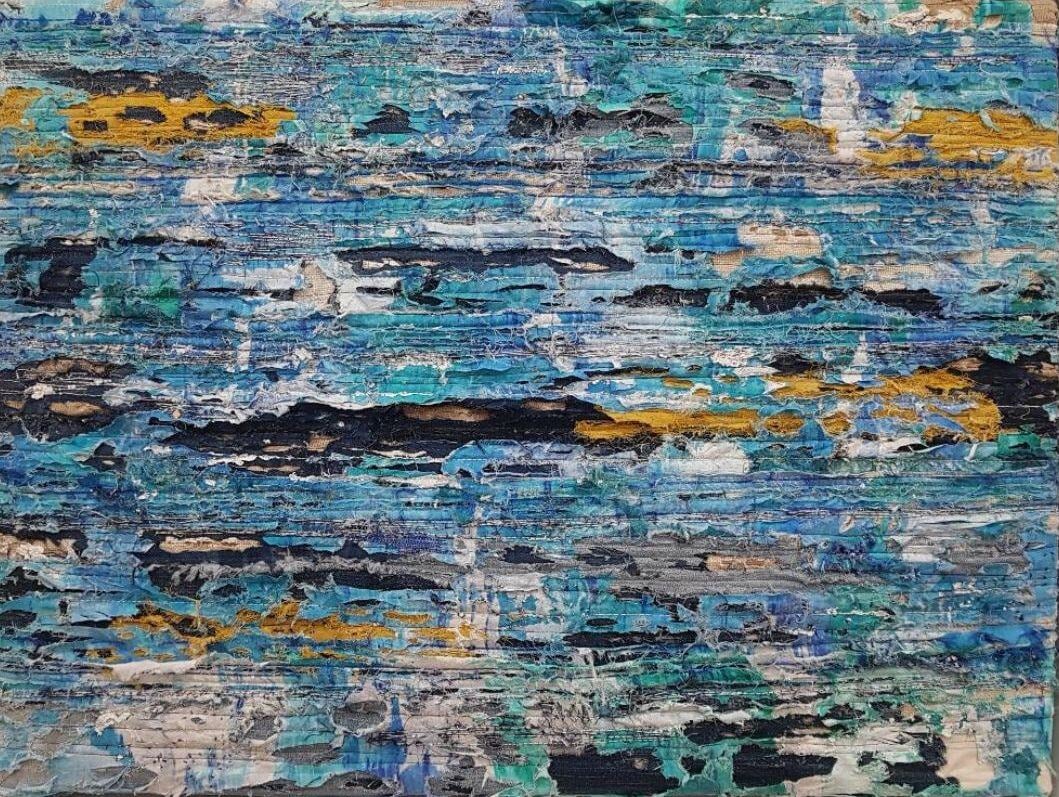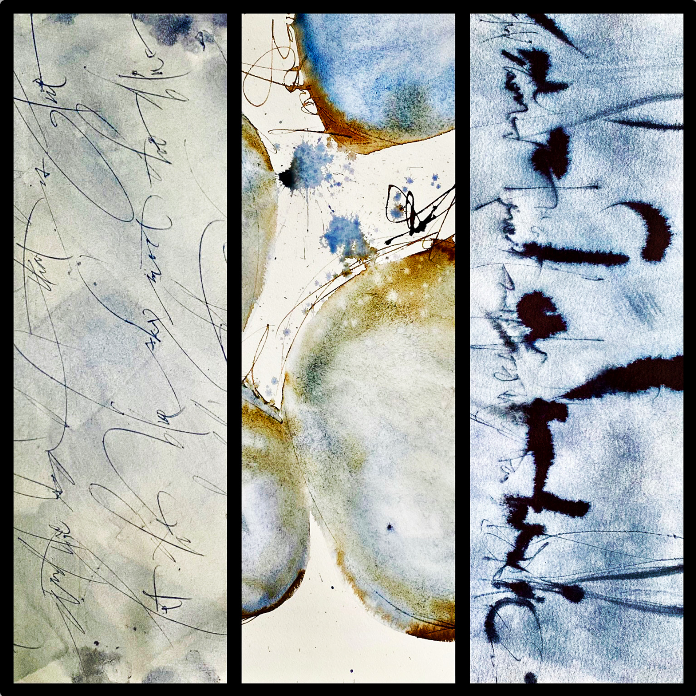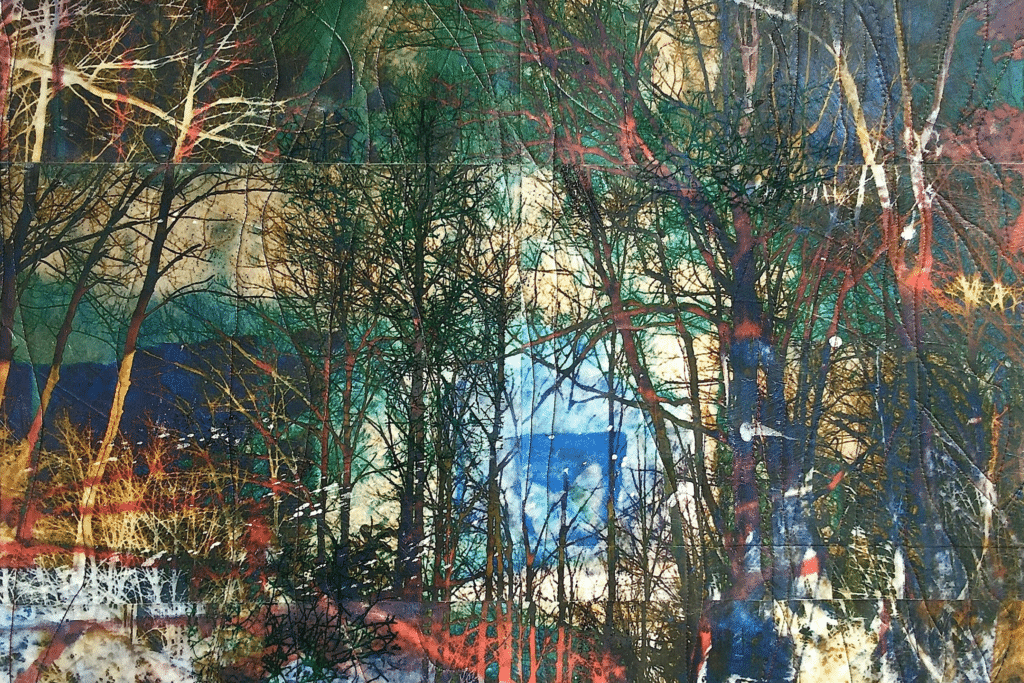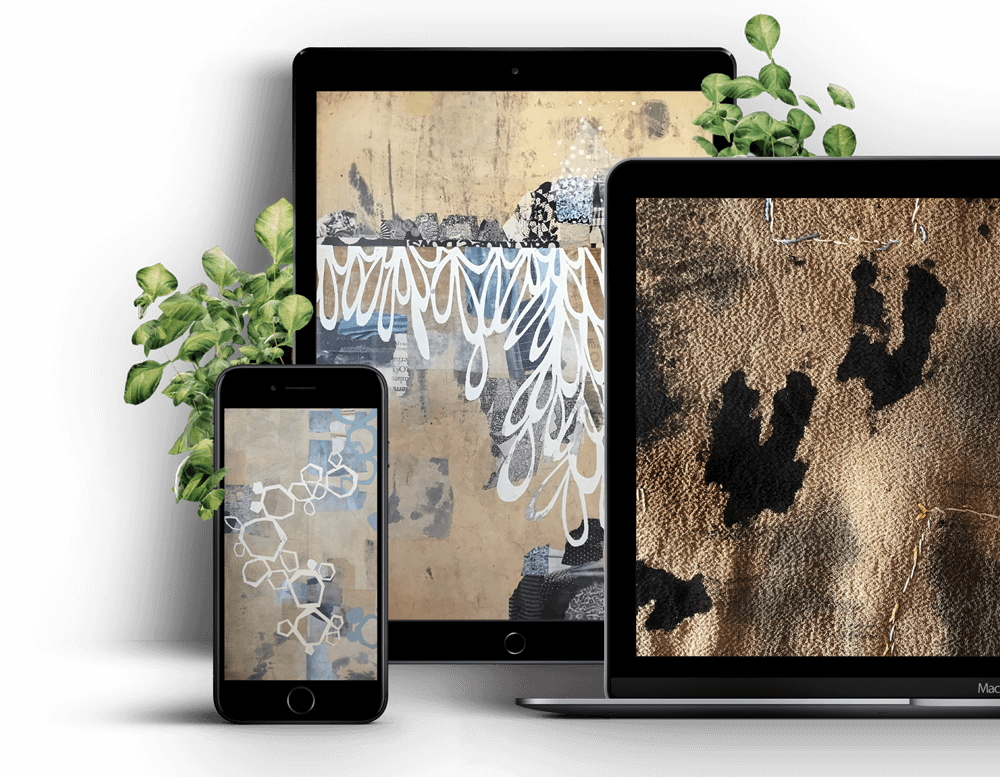Anne Kelly
Canadian-born, UK-based Anne Kelly stitches stories. Fibre Arts Take Two had the pleasure of discussing art and life with this delightful artist.
Anne Kelly’s Friday Feature Artist Interview can be found at the bottom of this page.
Anne Kelly’s Friday Feature Artist Interview can be found at the bottom of this page.
Canadian-born, UK-based Anne Kelly is an artist, author and tutor. Anne layers, patches, embroiders and stitches stories. Widely travelled, she likes to question and research the landscape, culture and traditions of places she visits.
Whether it’s being inspired by people of the past or vintage objects, exploring other cultures and traditions, presenting discoveries and new forms, and creating multi-layered works rich in meaning and visual interest. Fibre Arts Take Two enjoyed a chat with Anne about her life and work.
Canada
Anne’s love of art took shape in her native Canada. She explains, “I grew up in Canada in the 60s and 70s, which was a vibrant time in the country’s culture. They were celebrating the founding of Canada as a country, and there were lots of exhibitions and representations of indigenous Aboriginal art, which is incredible and very visual, with bold designs and patterns. I think that struck a chord. We also had the EXPO 67, a big World Fair in 1967. So architecture, art, and all those things for a young child were quite stunning, and it felt like the future was arriving on our doorstep.”
Her specific joy of stitching came a little later, “I think, like most children, we were introduced to a bit of stitching at school or by parents or grandparents,” Anne says, “But when I was a teenager, my mother sent me on a quilting course. I was bored in the summer, and she said, ‘Why don’t you do this course?’ I think it was only about 10 or 12, I was the youngest person there by a long way, but I absolutely loved it. And after that, I sort of commandeered her old singer. It was an old, hefty sewing machine, and I just loved it. I just always sewed; after that, I made clothes.”
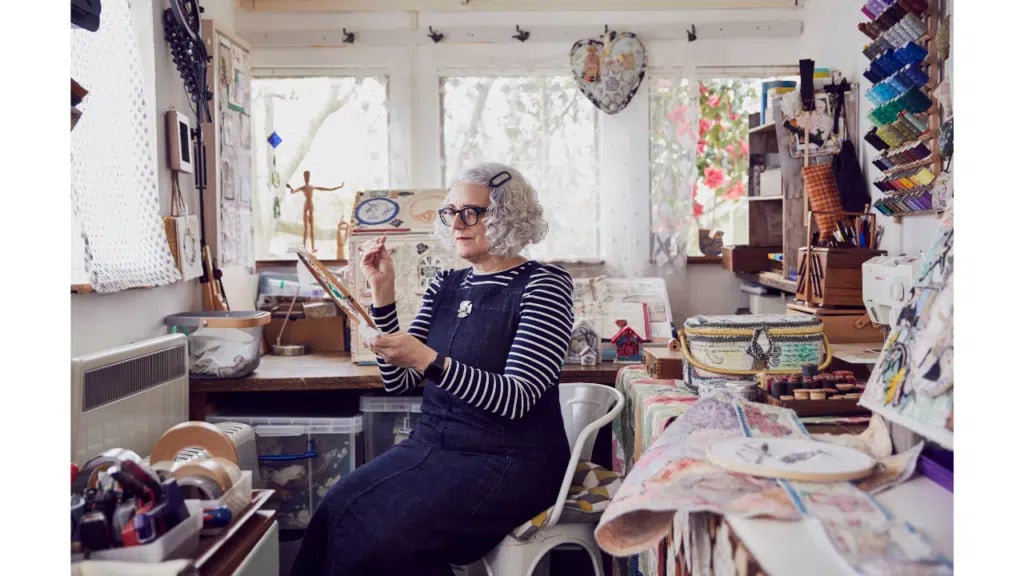
Fine arts
Despite having a passion for stitching, Anne started with fine arts. “Because I grew up in Canada,” she says. “there wasn’t really the history of textile education that there is in the UK, or there wasn’t at that point. So I ended up doing a fine art degree rather than a textile degree. I think if I’d grown up in the UK, I definitely would have done textiles. But I’m glad I did fine art; actually, it was a good grounding for everything that was to follow.”
Anne indeed still finds value in her fine arts training, “Drawing is important,” she says, “it’s the root of everything, and I think being confident in drawing is a great gift because you feel that you can tackle most things, rightly or wrongly. Also, the thought process is essential for organising ideas. People always say, ‘how long does it take you to do something?’ and I always say it’s not how long it takes. It’s the planning that takes the time; the making is probably the least demanding part of it. It’s the most enjoyable, relaxing part of it. The part that’s always difficult or time-consuming is planning and organising ideas.”
Visual spark
Artists find inspiration in many places. For Anne, it is always the visual, “For me, it’s always been the visual spark,” she says, “If I can’t visualise something, I can’t write about it. So I would say that it’s a chicken and egg situation. But the crucial part for me is the visual part.”
Anne firmly believes that visual inspiration is best sparked in the physical world, “Wherever you go, even if it’s just a short walk away from home, you pick different things up, don’t you?” She says, “It’s the difference between looking at something on a screen and seeing something in real life. It doesn’t necessarily matter where you go. I tried to address that in my book. I didn’t want people to think that it was only for people who could afford to go on expensive long-haul flights.”
Overall, the visual is the best outside of digital spaces, “I think touching and seeing and smelling the environment is something that you can’t replace with a screen.” says Anne, “I think it’s like seeing people, isn’t it? We thank goodness for Zoom and all the other online platforms that kept us in touch during the pandemic. But there’s nothing like seeing people in real life; it’s a different level of awareness. I think that’s what inspires you as an artist, isn’t it? Picking up on detail and seeing your interpretation of what you notice.”
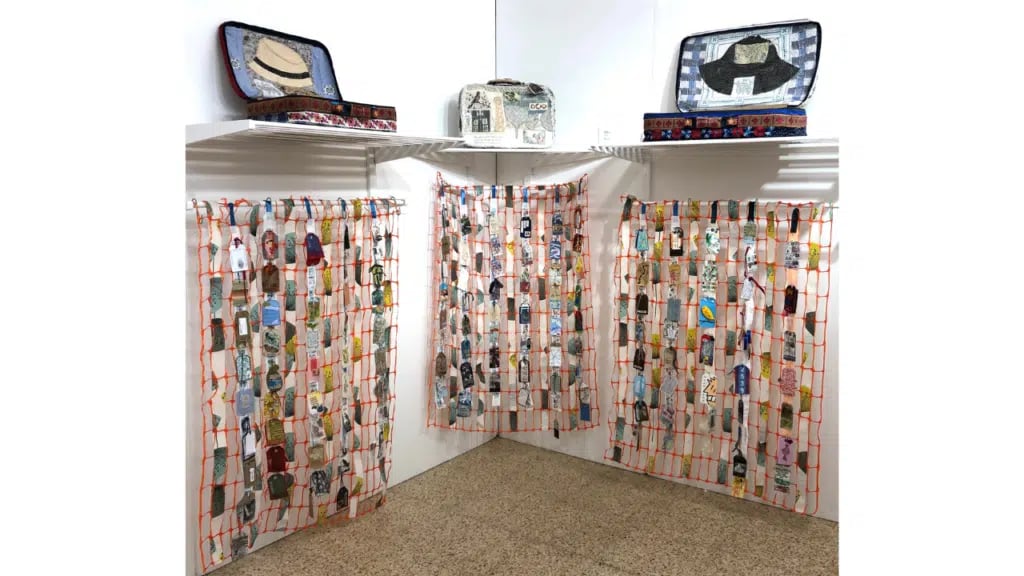
Curating her collection
With collecting a highly significant part of her process, many people wonder whether Anne isn’t drowning in bits and pieces. It turns out this isn’t the case, “I’m quite brutal when it comes to sorting things out. People always say, ‘Oh, you must have an incredible stash.’ But I don’t because I only keep things I know I will use. And if I don’t, I’ll give them to students or schools. It’s a bit like a wardrobe; if you can’t see it, you’re not going to wear it; I think it’s the same with your stash. If you can’t see what you’ve got and don’t know what you’ve got, then you can’t use it. Also, I don’t have a huge house or studio, so I have to be very disciplined about space. “
The second-hand nature of her esoterica also makes sending it on its way more comfortable for Anne. “I always say to my students, ‘Don’t save it. What are you saving it for, you know, because nobody wants this stuff except us’” she says, “Most people don’t want it. Most of the things that I collect are things that people have already discarded and don’t want, so I don’t feel any guilt or sense of responsibility in using them because I’m giving them a new life. In a way, you’re treasuring them more by using them in a creative process.”
Australia and India
While Anne is widely travelled, two destinations have stood out for her: “I loved Australia,” she says, “I loved Australia, and I was amazed because I didn’t know anything about it. I think India is amazing because textiles are everywhere; every part of India has its heritage and tradition. And although I don’t use a lot of Indian textiles in my work, I did love the sense of the simplicity of how beautiful the colours are and how the stitching characterises a family’s livelihood. There’s so much skill there and so much history.”
Anne found Australia particularly endearing because of the way this country demolished her preconceived notions. “One has a different view of a country before you visit it then when you visit it. I didn’t know anything about Australia apart from the cliches that people from outside Australia would have. Visiting was just a joy because it’s such a beautiful country. The birds are amazing. I mean, the first time I saw Rainbow lorikeet, I almost fell over. I think wherever you go, you have always had a different idea of what it will be like until you see it. And then that goes back to the whole thing we were talking about actually experiencing something rather than just looking at it.”
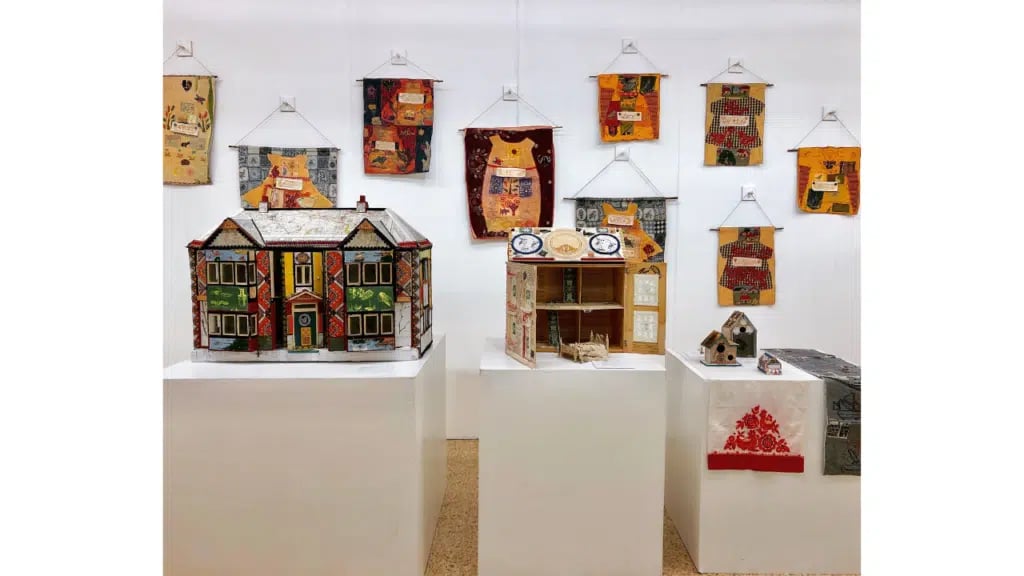
About the artist
Anne is an award-winning Canadian-born, UK-based artist, author and tutor. Her multilayered and densely stitched textiles have been likened to ‘small worlds’. Trained in Canada and at Goldsmiths College in London, she creates wall hangings and objects using a mixture of mixed media collage and hand and machine embroidery. Her teaching and gallery work takes her around the UK and abroad.
Join Our Newsletter
OUR YOUTUBE CHANNEL
View our interviews and more on our Youtube channel!
OUR FACEBOOK GROUP
Join our Community and stay updated with our upcoming announcements!

